class: center, middle, inverse, title-slide # Regional Disparities, Aggregation Effects and the Role of Space ## Evidence from Homicide Rates in Colombia 2010-2018 ### Felipe Santos <br />M1 research student<br />Graduate School of International Development<br />Nagoya University, JAPAN <br /> <br /> Prof. Carlos Mendez <br /> Graduate School of International Development<br />Nagoya University, JAPAN <br /> ### July 24th 2019 --- ## Motivation: - Beyond GDP, social variables and their convergence are relevant for development studies (Royuela et al 2015) - Persistent income differences, differences in health indicators and in "general" regional inequality in Colombia. - Scarce academic literature on inequality (convergence approach) at the municipality level. ## Research Objective: - Study convergence/divergence of homicide rates across municipalities and departments in Colombia 2010-2018 - Analyze spatial autocorrelation and its robustness at different disaggregate levels ## Methods: - Classical convergence framework (Barro and Sala-i-Martin 1992) - Distributional convergence framework (Quah 1996; Hyndman et. al 1996) - Spatial autocorrelation (Moran's I) --- class: middle # Main Results: 1. **Sigma Convergence** for homicide rates at the state level, **Beta Convergence** at the municipality level 2. Regional disaggretation matters: **Local convergence clusters** 3. **Clustering dynamics** - State level: 4+? convergence clusters - Municipality level: 2+? convergence clusters 4. **Spatial Autocorrelation** robust only at the municipality level --- class: middle # Outline of this presentation 1. **Data description** Survival rates (not homicide rates) 2. **Global convergence:** Using classical summary measures - Beta convergence - Sigma convergence 3. **Regional disaggregation:** - Distribution dynamics framework - Distributional convergence 4. **Local convergence clusters** 5. **Global spatial autocorrelation:** - Disaggreagation effects 5. **Concluding Remarks** --- class: middle # Data: - Total number of homicides in Colombia per year from 2010 until 2018 (data taken from the National police). - Data is agreggated at the municipality and departament level. - Population census and estimates for states and municipalitites. - Raw rates computed `$$Hrate= homicides/population$$` - Survival rates (non- murder rates) computed `$$NMR= 10000- raw\ rate * 10000$$` - **Survival rates** are chosen because positively defined variables are a **standard** in the convergence literature. --- class: center, middle # (2) **Global convergence:** **Using classical summary measures** Beta convergence Sigma convergence --- class: middle,center ## States- Sigma and Beta convergence `$$\sigma (Standard \ \space deviation)\space\sigma_{2010}= 1.84\space\space\space\space\space \sigma_{2018}=1.26$$` `$$log{\frac{Y_t}{Y_0}}=\alpha +\beta *logY_0+ \epsilon \space\space\space\space\space\beta=-0.476^{***} \space\space\space\space halflife=8.59\space years$$` 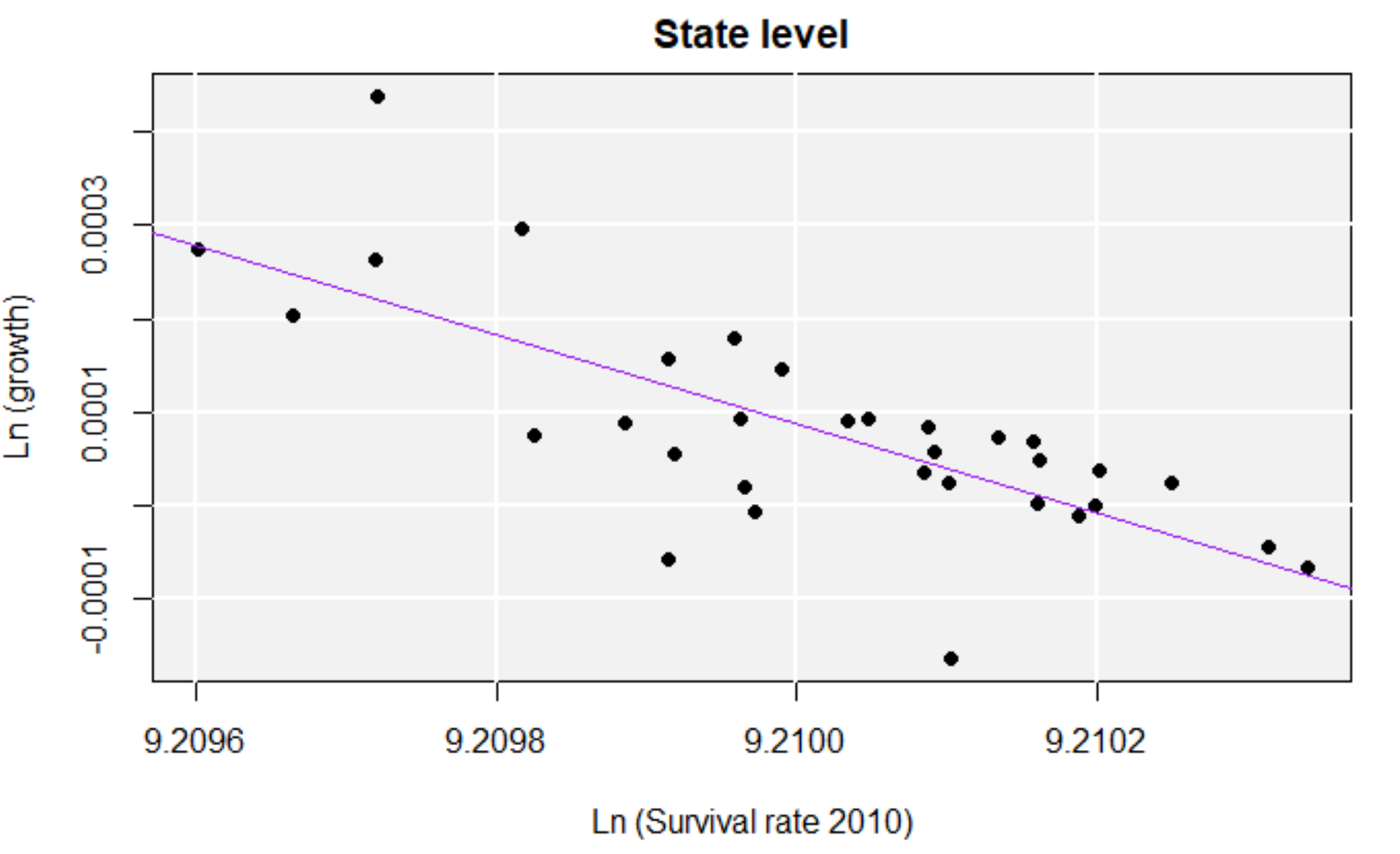 --- class: middle, center ## Municipalities - Beta convergence (only) `$$log{\frac{Y_t}{Y_0}}=\alpha +\beta *logY_0+ \epsilon \space\space\space\space\space\beta=-0.551^{***} \space\space\space\space halflife=6.92\space years$$` 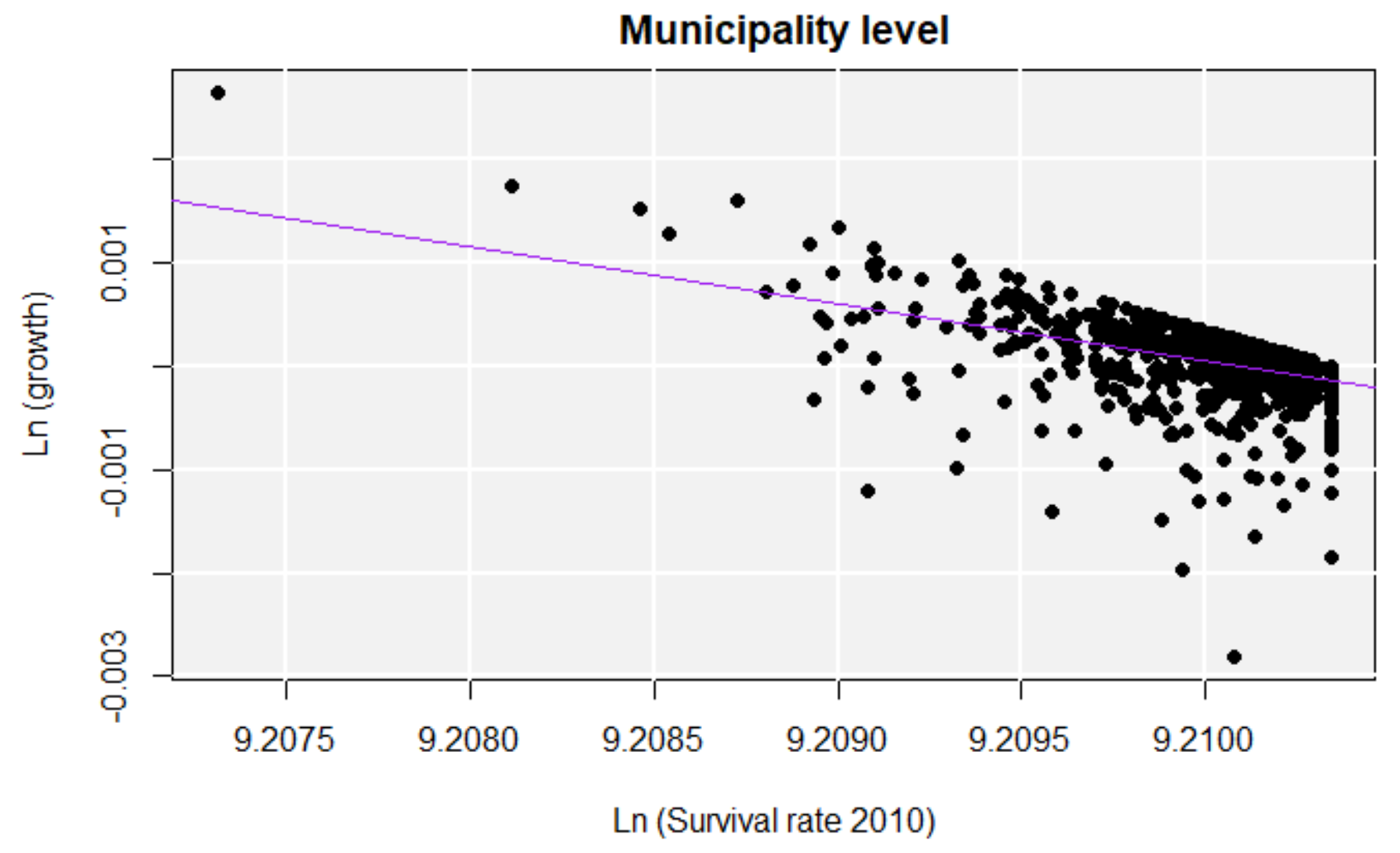 --- class: center, middle # (3) **State and Municipality disaggregation:** Distribution dynamics framework Distributional convergence class: middle # Regional heterogeneity matters Dynamics of the **entire regional distribution** **conditional density** estimation --- class: middle, center ## The distribution dynamics framework 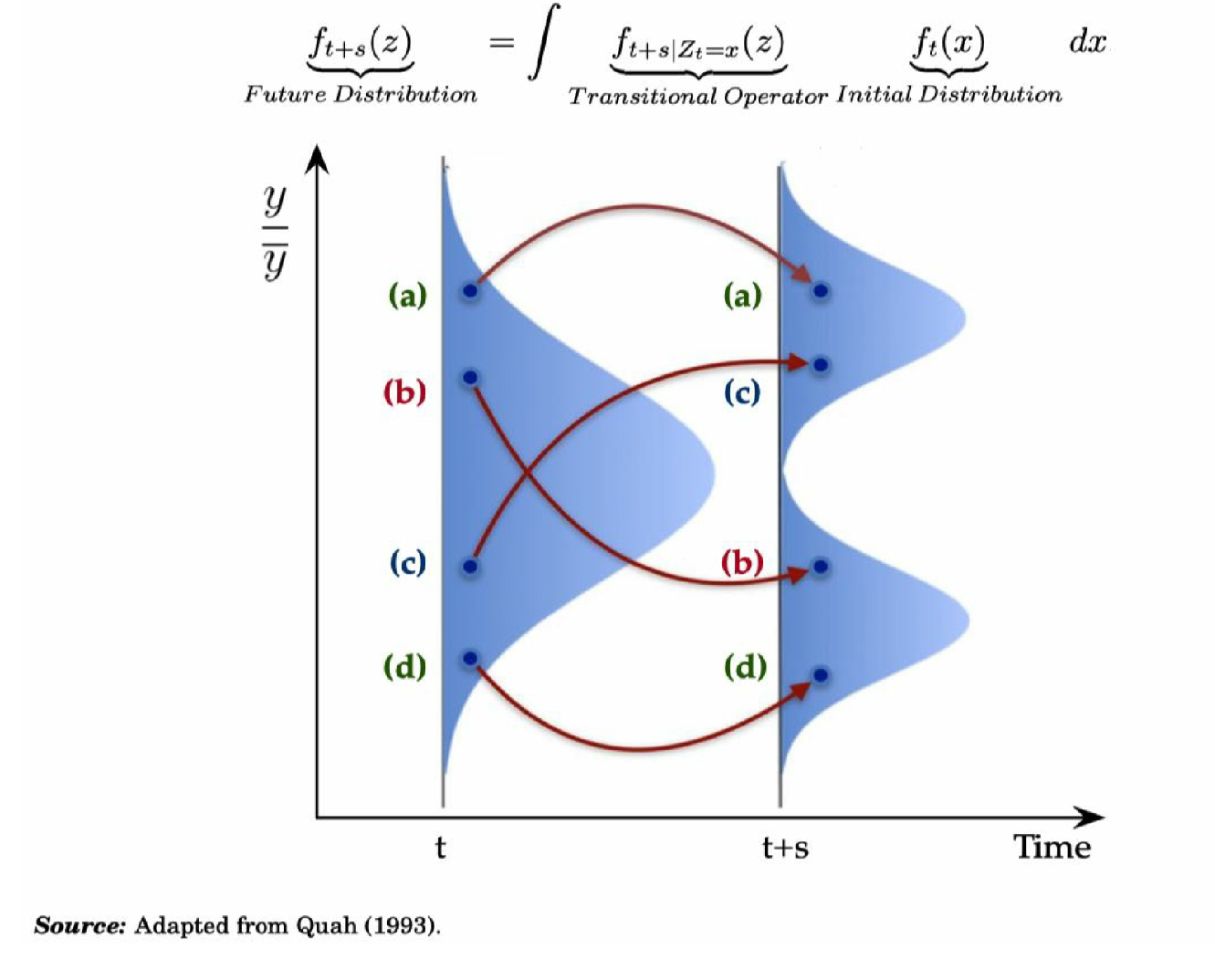 --- class: middle, center # (4) Local convergence clusters State level: 4+? convergence clusters Municipality level: 2+? convergence clusters --- class: middle, center # Where are the clusters? Municipality level **- - - - - - - - - - - - - -** Department Level 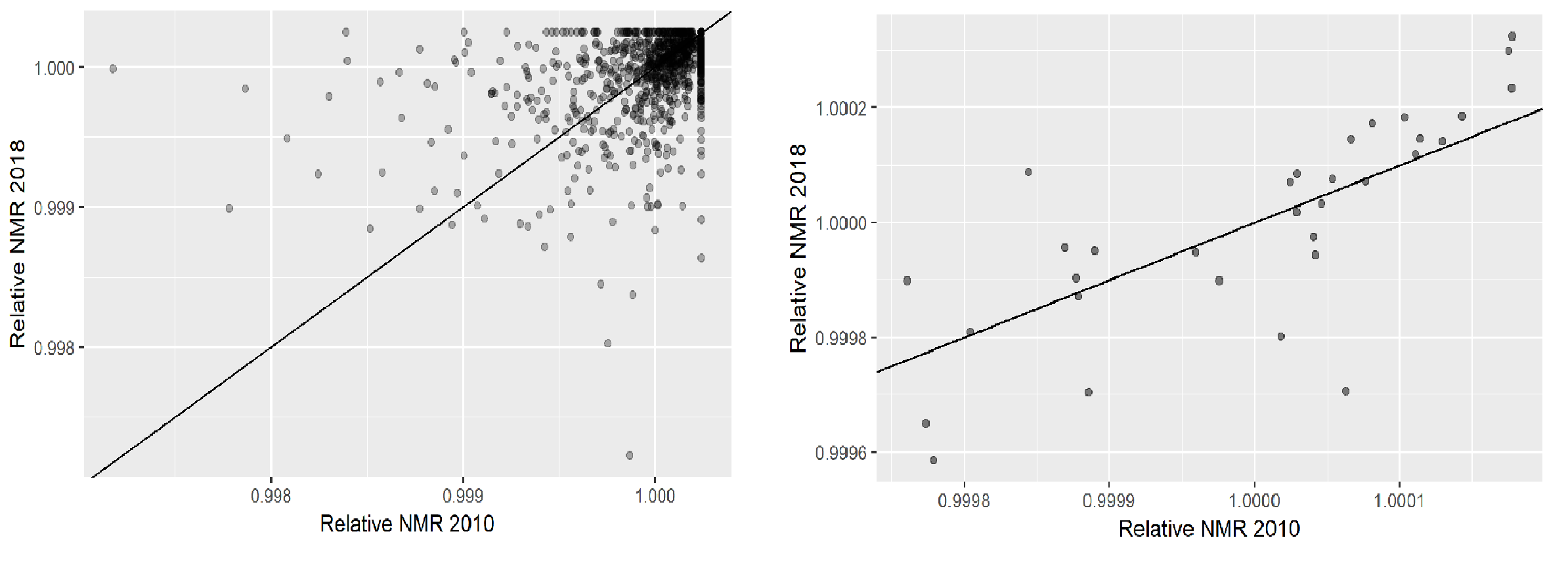 Those lines are not regression trends! --- class: middle, center # State level: 4+? convergence clusters 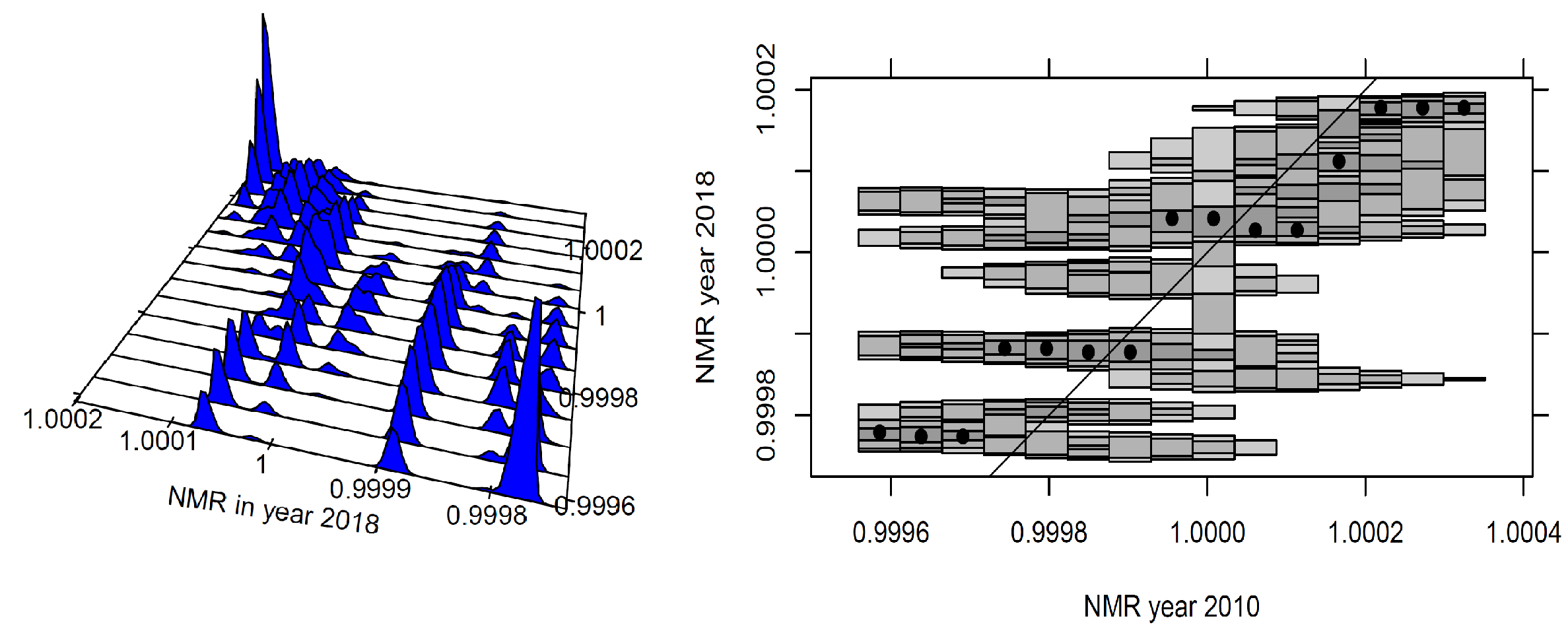 Multimodal distribution with sigma convergence --- class: middle, center # Municipality level: 2+? convergence clusters 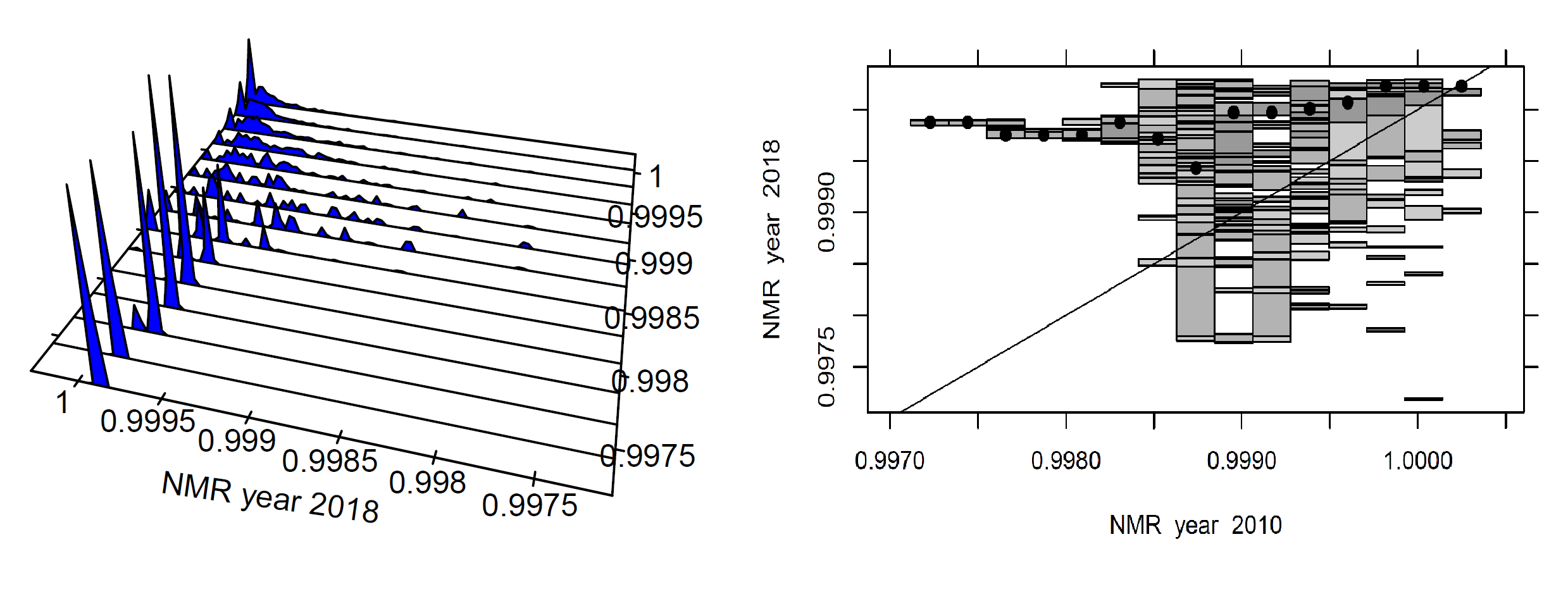 Interesting results; there are fewer clusters but sigma convergence is not present. --- class: middle # (4) Spatial Autocorrelation (moran I definition) ##**High Intuition Concept** 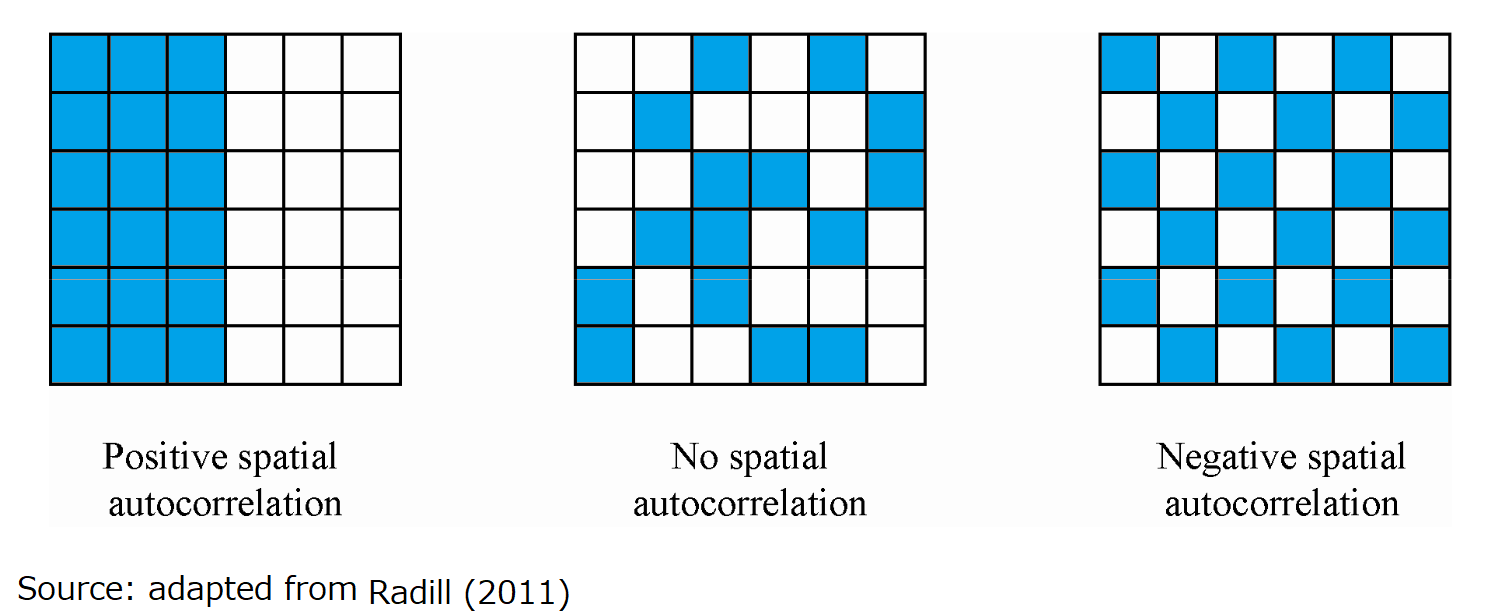 ##More Formal (less intuitive)  --- class: justify, center, middle `$$I = \frac{\sum_i\sum_j w_{ij} z_i.z_j}{\sum_i z_i^2} = \frac{\sum_i (z_i \times \sum_j w_{ij} z_j)}{\sum_i z_i^2}.$$` In the linear regression **y=α+βx** , the estimate for **β** is `\(\sum_i (x_i \times y_i) / \sum_i x_i^2\)`.In the Moran scatter plot shown below, **y** is the spatial lag variable `\(\sum_j w_{ij} z_j\)` 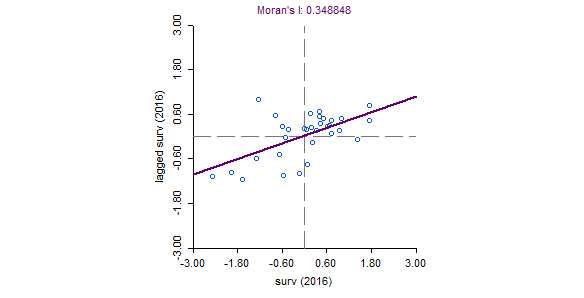 ##Differential Moran Scatter Plot ( `\(y_{i,t}−y_{i,t−1}\)` ) Differencing the variable to control for the locational fixed effects: We computate the Moran's I for the variable `\(y_{i,t}−y_{i,t−1}\)`. If we consider there is a fixed effect `\(\mu_i\)` related to location `\(i\)`, it is possible to present the value at each location for time `\(t\)` as the sum of some intrinsic value and the fixed effect. `\(y_{i,t} = y*_{i,t} + \mu_i\)` (Geoda documentation 2019) --- class: middle, center # (4) Spatial autocorrelation **State level**: Moran's I statistic significant from 2012, differntial Moran's I is not significan (**not robust**) **Municipality level**: Differential Moran's I significant from 2010 (**robust**) --- # (4) Spatial autocorrelation ## State level (not robust) - Univatiate Moran's I is significant from 2012. - But, **The differential moran statistic is not significant**. It is then considered that the significance of Spatial Autocorrelation is **not robust**. - See plots for 2014 and 2014-2013, similar for other years (standarized variables) 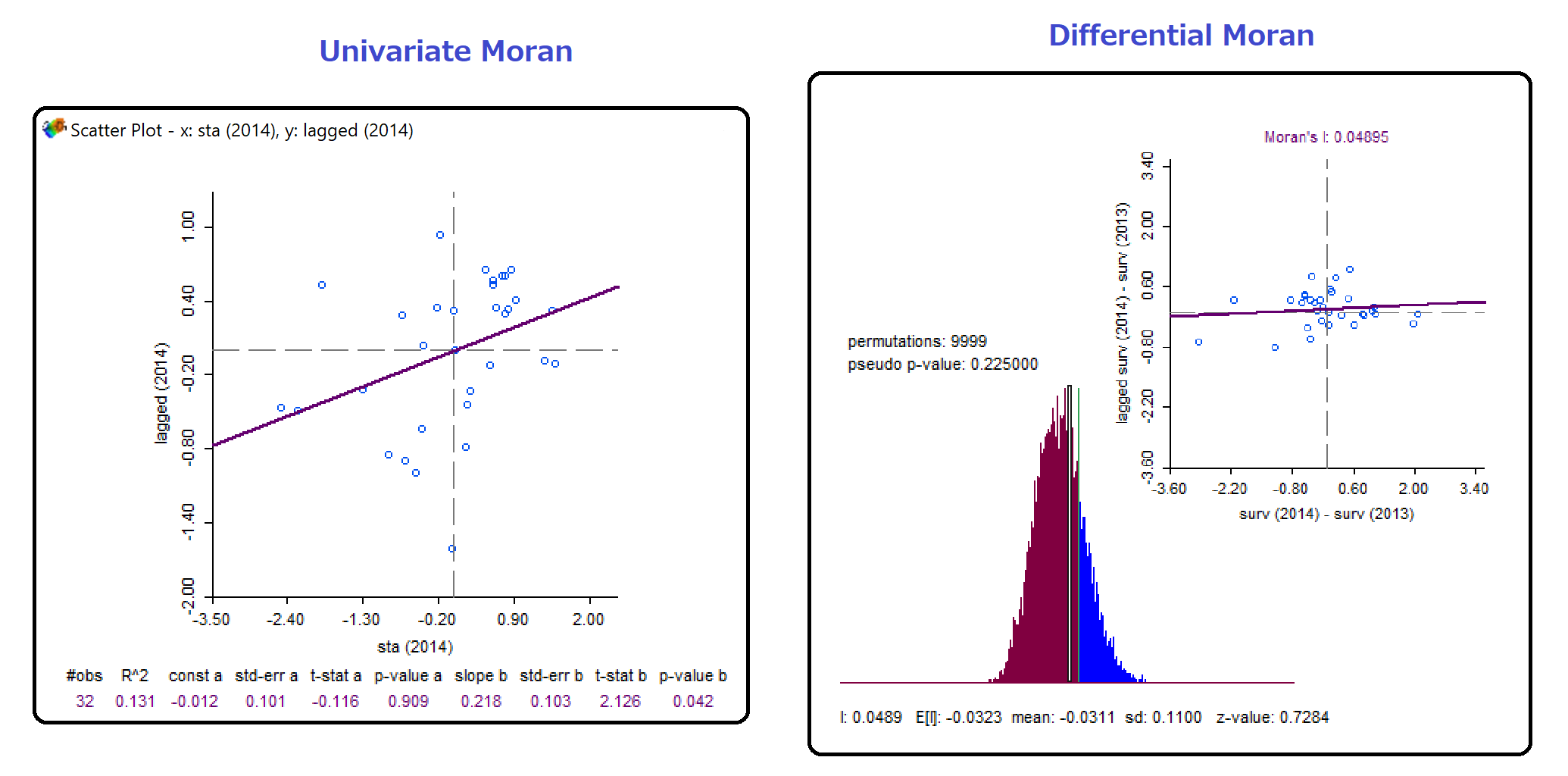 --- # (4) Spatial autocorrelation ## Municipality level (**Robust**) - The univariate Moran's I is not significant in 2010 and 2011. however, it is significant from 2012 to 2018; reaching a maximum value in 2016. - Differential Moran's I ( `\(sur_{2018}-sur_{2010}\)` ) is **significant** `\(Moran's\ I = 0.22^{***}\)` - Subsequent Differential Moran's I `\(sur_{t}-sur_{t-1}\)` **statistically significant at the municipality level**. Except 2014-2013 (not statistically significant) see graphs 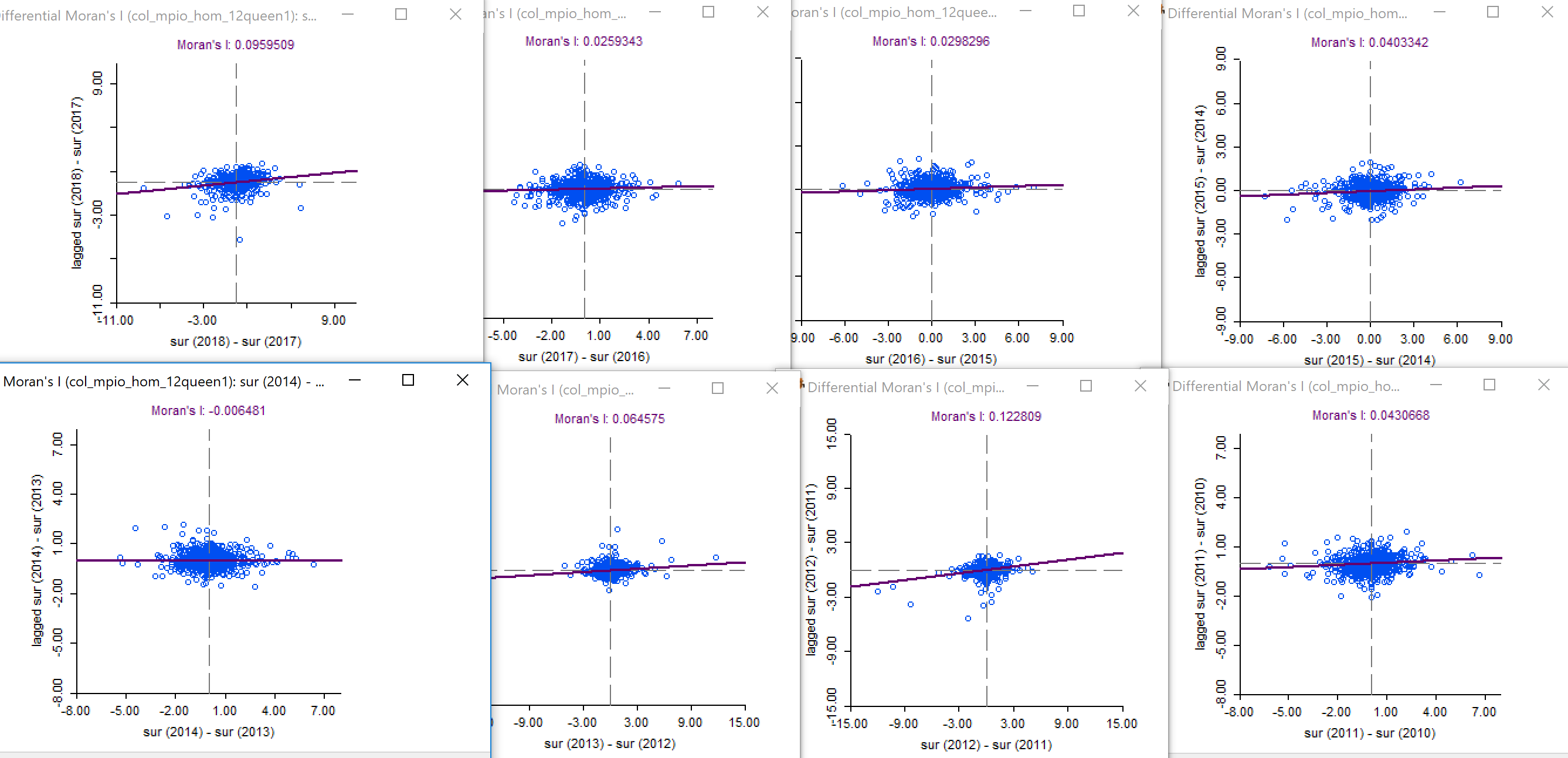 --- # (5) Concluding Remarks ## Uplifting results "on average" : - Differences in overall raw rates at the state level **have decreased** and the means at both levels have increased (survival rate) - **Global convergence on average at the state level**, while fast beta convergence at the municipality level. ## Beyond classical convergence : - Regional differences matter in **both disaggreagation levels**. - **Multiple local convergence clubs**; with more clubs at the state level. ## The Role of Space - Subsequent Differential Moran's I are robust and significant at the **municipality level only** - Results at the **state level** are not conlusive and similar to the ones reported by Royuela et al 2015. --- # (5) Concluding Remarks # Implications and further research - Strong spatial autocorrelation suggest the posibility of applying the Getis filtering in order to filter the spatial component of homicide variables. - Convergence clusters help us to find regions with similar outcomes, coordination among them can be promoted. - Has crime followed a trajectory? can a speed and direction of contagious patterns be found? - At the state or department level (including more variables) can a probit model help us to find the determinants for a conditional "jump" to the upper clusters. --- class: center, middle # Thank you very much for your attention If you are interested in our research, please check Prof. Carlos Mendez website https://carlos-mendez.rbind.io And the research semminar's website https://carlos-seminar.rbind.io/ *** Stay tuned for my Felipe's Master's thesis ##Will the SGDs be Achieved in Colombia? A Study of National Convergence and Regional differences. Gender inequality, Income, Eduacation, Crime... Classical convergence, Distributional Dynamics, Spatial Filtering, Spatial econometrics, long-run Filtering...